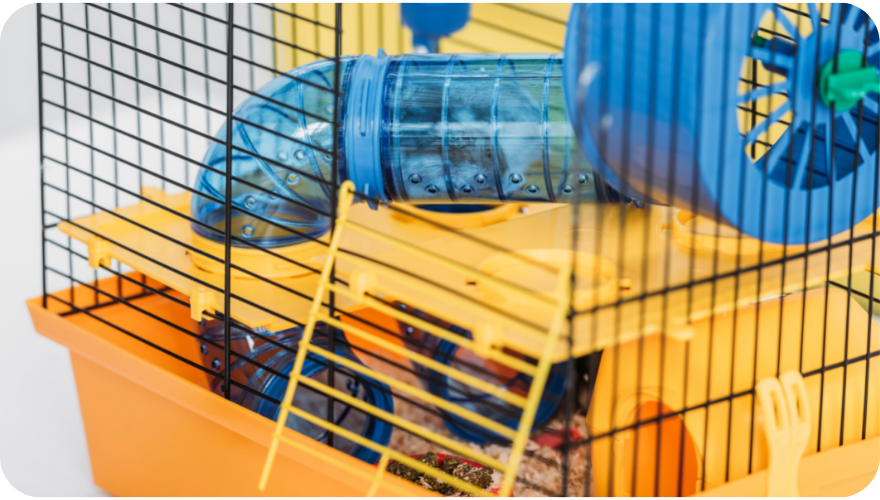If you’re looking for the best hamster cage on the market, then look no further!
This blog post will help you find just what your little friend needs. From materials to size and shape, we’ll cover it all so that you can make an informed decision about which is best for your pet.
We hope this guide is helpful and wish you luck in finding a perfect home for your furry friend.
Why Hamsters Need a Proper Cage?
A hamster cage is a place where hamsters eat, sleep, and live.
Hamsters need their own cage because they are very social animals and they are not meant to be with other pets such as mice, gerbils, guinea pigs, or rabbits.
Besides that, a proper cage can avoid your hamster from escape and die. If a hamster escapes, there’s always the risk of never seeing it again.
Hamsters like to climb around on things which means that the owner needs to provide some kind of good toys for them.
They also need a wheel (or an exercise ball) for exercise purposes because without it, their muscles will shrink and they might get obese.
Features To Look For In a Good Hamster Cage
- A space large enough for your hamster to move around
- Have good ventilation for keeping the air fresh and avoiding smells to an extent
- Easy to disassemble and clean
- Transparent or glass walls so you can see your hamster at all times. That way if the hamster is off doing something that it shouldn’t be, you’ll be able to tell.
- The cages should have hiding places, shelves, and platforms inside them so that your hamster can climb, jump and burrow into interesting places
- Solid floors that cannot be shredded by the hamster’s teeth or paws
- Free accessories included such as a wheel, tunnels, hideout spots, or activity toys are necessities
Types of Cages
There are two main types of hamster cages on the market today.
Some people like to have more room for their furry friends, while others prefer something smaller and easier to clean.
It’s important to find the type that suits you and your pet best.
Wire Cage
Wire cages are the most popular cage on the market because they’re cheap, sturdy, and easy to clean.
They typically have a plastic bottom to protect your furry friends’ feet from wire damage and can be used for climbing purposes.
Wire cages also offer plenty of ventilation, are larger than those made from plastic, and don’t trap heat too badly.
When purchasing a wire cage, make sure that the cage has small gaps between the rods so that your hamsters feet can’t get caught or head stuck between them.
Plastic Cage
Plastic cages are also a good choice for your hamster because they’re lightweight, cheap, durable, easy to assemble and dismantle for cleaning, and come in many different shapes and sizes.
Besides that, they are more flexible than a wire cage which means they can take up less space in your home.
However, there are also cons because a plastic cage has less ventilation than wire cages, which makes it more difficult for your hamster to regulate its body temperature.
How To Clean Your Hamster’s Cage
Cleaning a hamster’s cage is not too difficult, but it does require more time.
The first step is to remove all of the bedding and check the litter box for any soiled or wet bedding that may have been dumped in.
Check for dirty spots too where urine has accumulated as these need to be scrubbed clean with soap and a sponge until they’re spotless.
You also need to remove your hamster’s old/uneaten food, and spilled water and replacing them with the new one.
Cleaning should be done at least once a week and it’s also important to be sure there are no sharp or metal objects lying around, as hammies like strange things sometimes.
Conclusion
Hamsters have a lot of energy and need to be able to run around. A large cage with lots of space is best for hamsters, but any type of cage will help provide them some room from which they can move about freely.
If you don’t know what kind or size of enclosure your pet hamster needs, it’s worth asking the shop where you’re purchasing one or consulting an expert on animal care before making a purchase.
You’ll want to make sure that whatever habitat you choose offers enough breathing space for your new friend as well as plenty of bedding material and toys so he doesn’t get bored in his new home.
